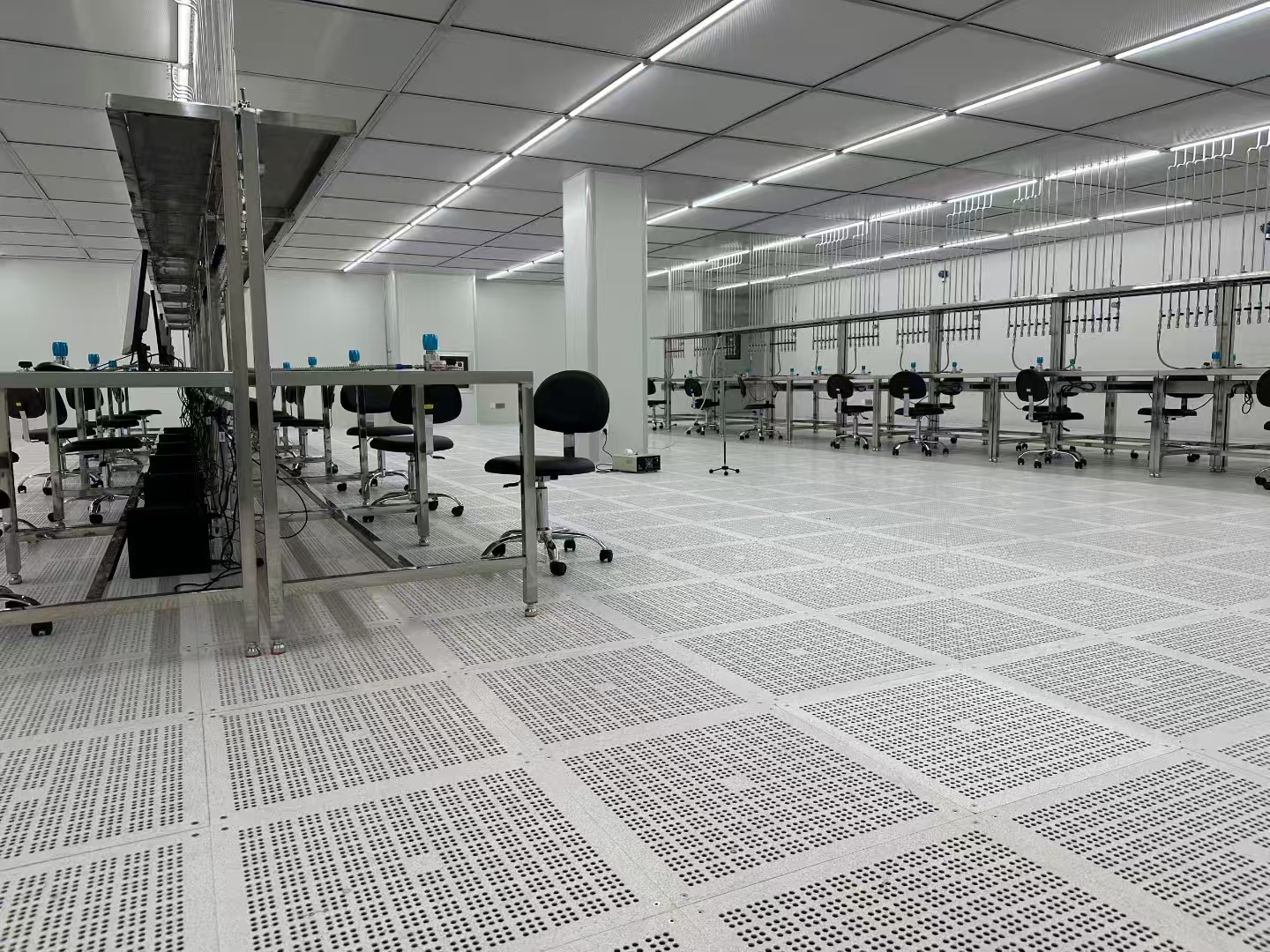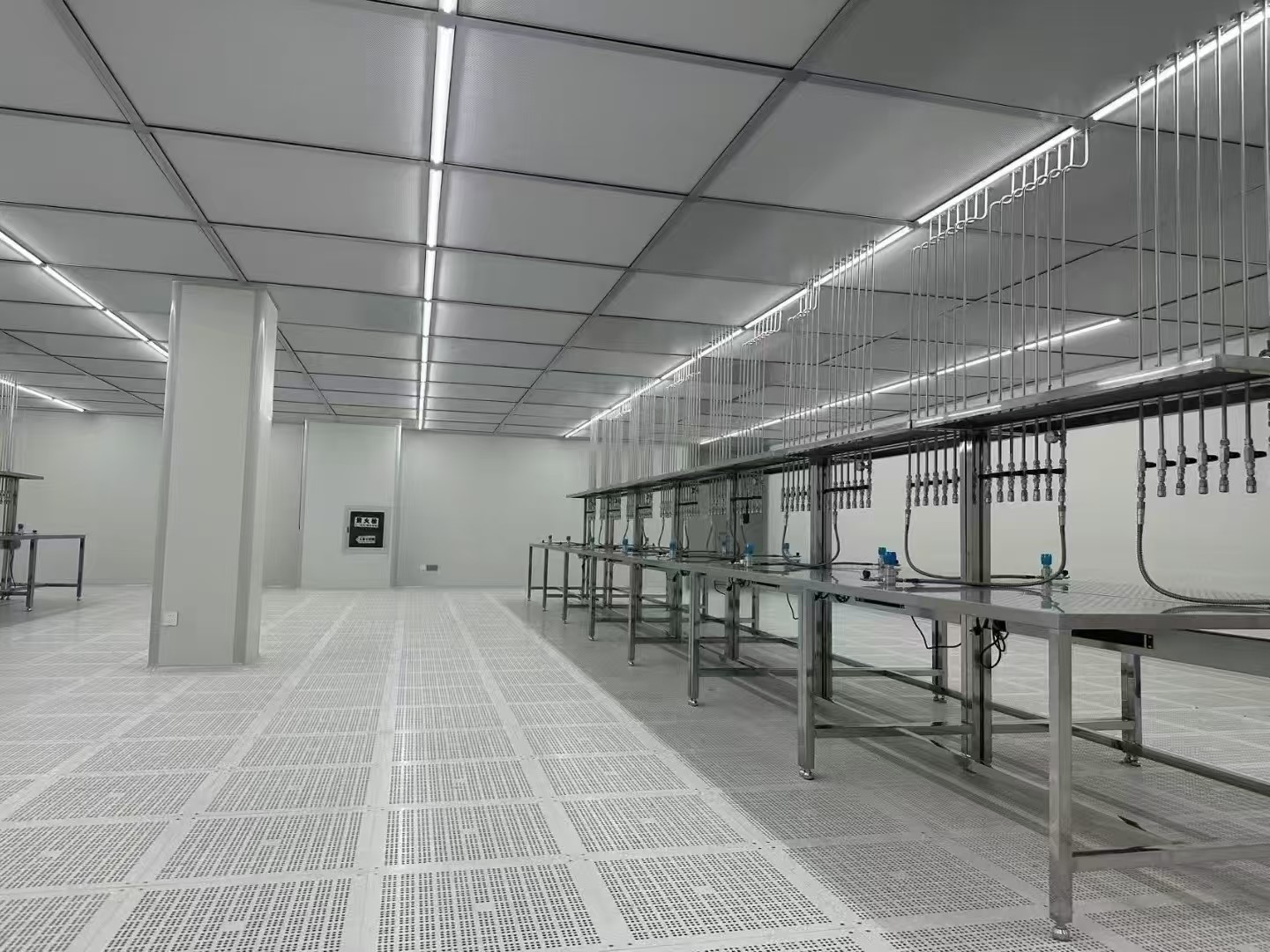

1. Class B clean room standards
Controlling the number of fine dust particles smaller than 0.5 microns to less than 3,500 particles per cubic meter achieves class A which is the international clean room standard. The current clean room standards used in chip production and processing have higher dust requirements than class A, and these higher standards are primarily used in the production of higher-end chips. The number of fine dust particles is strictly controlled to less than 1,000 particles per cubic meter, commonly known in the industry as class B. Class B clean room is a specially designed room that eliminates contaminants such as fine particles, harmful air, and bacteria from the air within a defined space, while maintaining temperature, cleanliness, pressure, airflow velocity and distribution, noise, vibration, lighting, and static electricity within specified limits.
2. Class B clean room installation and use requirements
(1). All repairs to prefabricated clean room is completed within the factory according to standardized modules and series, making them suitable for mass production, stable quality, and rapid delivery.
(2).Class B clean room is flexible and suitable for both installation in new buildings and for retrofitting existing clean room with purification technology. Repair structures can be freely combined to meet process requirements and are easily disassembled.
(3). Class B clean room requires a smaller auxiliary building area and have lower requirements for local construction and renovation.
(4). Class B clean room feature flexible and rational airflow distribution to meet the needs of various work environments and cleanliness levels.
3. Design standards for class B clean room interiors
(1). Class B clean room structures are generally categorized as either civil structures or prefabricated structures. Prefabricated structures are more common and primarily include air conditioning supply and return systems composed of primary, intermediate, and advanced air filters, exhaust systems, and other supporting systems.
(2). Indoor air parameter setting requirements for class B clean room
①. Temperature and humidity requirements: Generally, the temperature should be 24°C ± 2°C, and the relative humidity should be 55°C ± 5%.
②. Fresh air volume: 10-30% of the total supply air volume for non-unidirectional clean room; the amount of fresh air required to compensate for indoor exhaust and maintain positive indoor pressure; ensure a fresh air volume of ≥ 40 m³/h per person per hour.
③. Supply air volume: The clean room's cleanliness level and thermal and humidity balance must be met.
4. Factors affecting the cost of class B clean room
The cost of class B clean room depends on the specific situation. Different cleanliness levels have different prices. Common cleanliness levels include class A, class B, class C and class D. Depending on the industry, the larger the workshop area, the smaller the value, the higher the cleanliness level, the greater the construction difficulty and the corresponding equipment requirements, and therefore the higher the cost.
(1). Workshop size: The size of a Class B clean room is the primary factor in determining the cost. Larger square footage will inevitably result in higher costs, while smaller square footage will likely result in lower costs.
(2). Materials and equipment: Once the workshop size is determined, the materials and equipment used also affect the price quote. Different brands and manufacturers of materials and equipment have different price quotes, which can significantly impact the overall price.
(3). Different industries: Different industries can also affect clean room pricing. For example, prices for different products in industries like food, cosmetics, electronics, and pharmaceuticals vary. For example, most cosmetics do not require a makeup system. Electronics factories also require clean room with specific requirements, such as constant temperature and humidity, which can lead to higher prices compared to other clean room.
(4). Cleanliness level: Clean rooms are typically classified as class A, class B, class C, or class D. The lower the level, the higher the price.
(5). Construction difficulty: Construction materials and floor heights vary from factory to factory. For example, the materials and thickness of floors and walls vary. If the floor height is too high, the cost will be higher. Furthermore, if plumbing, electrical, and water systems are involved and the factory and workshops are not properly planned, redesigning and renovating them can significantly increase the cost.


Post time: Sep-01-2025

